Categories
Subjects
Authors
Artists
Venues
Locations
Calendar
Filter
Done
January 11, 2018 – Review
Pablo Bronstein’s “The largeness of China seen from a great distance”
Simone Menegoi
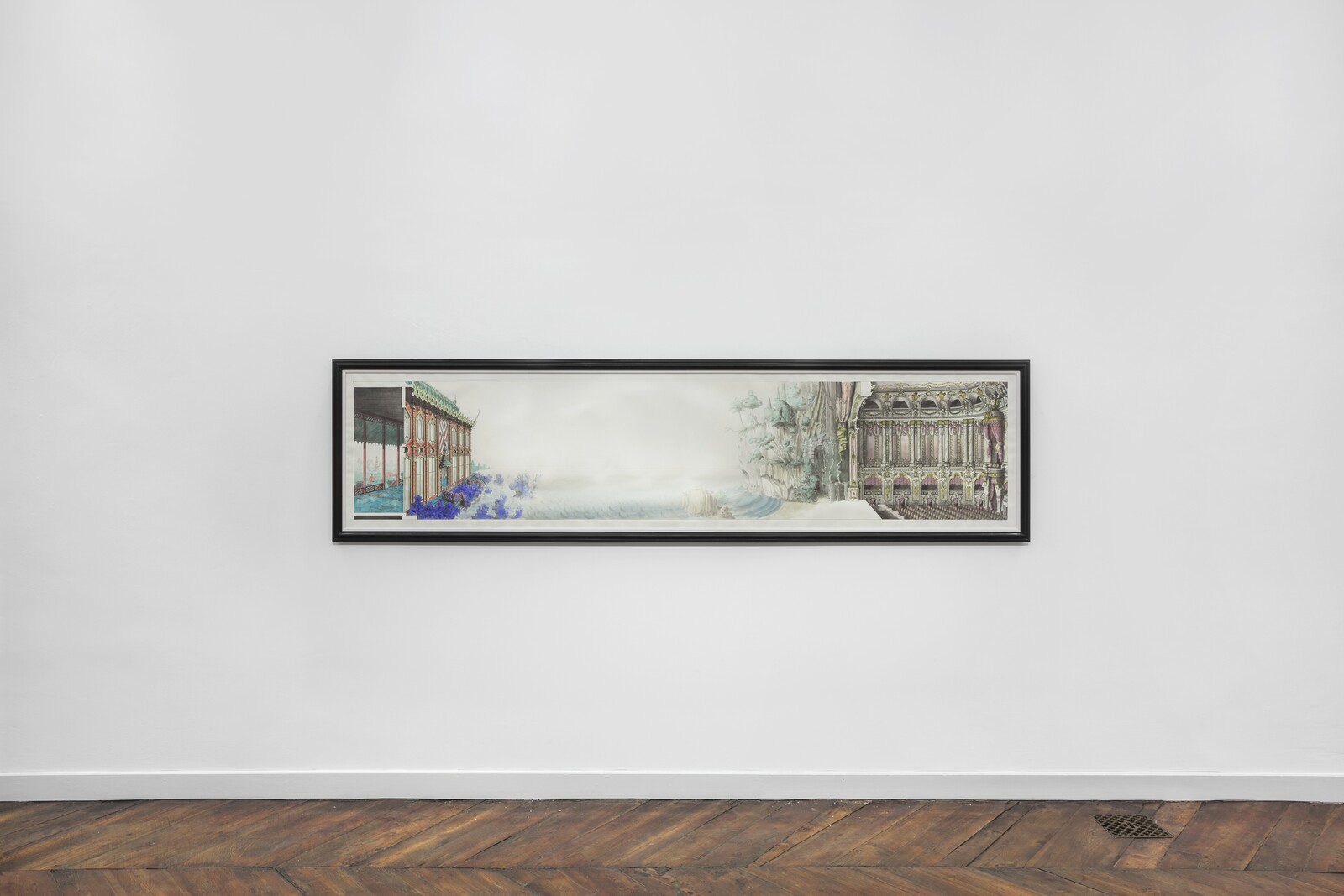
The fashion for Chinese decoration, architecture, and craft in Europe was the first great wave of exoticism in Western culture. It lasted for more than a century, from roughly 1670—when Louis XIV commissioned the Trianon de Porcelaine, a Chinese-inspired architectural folly, for Versailles—to the end of the eighteenth century. It reached manic heights (Augustus the Strong, prince of Saxony, almost drained the state finances to fuel his collection of porcelains), and left an indelible mark on the history of taste (the “English garden” was also born of a desire to imitate Chinese landscape architecture). So it’s surprising that it’s taken Pablo Bronstein, whose oeuvre draws on eighteenth-century architecture and décor, so long to devote an entire exhibition to it. Perhaps the venue persuaded the Argentina-born, London-based artist that the time had come: a wonderful eighteenth-century apartment in the center of Turin, a room of which is still decorated with frescoes in the Chinoiserie style.
The aspect of this Sinomania that most interests Bronstein is distance. The geographical and cultural distance separating Europe from China is cause for both fascination and misunderstanding, with the representation of each by the other swinging between idealization and caricature. The show’s opening work evokes that distance. …
June 2, 2015 – Review
Raphael Danke’s “Stoneflesh Aura”
Vincenzo Latronico
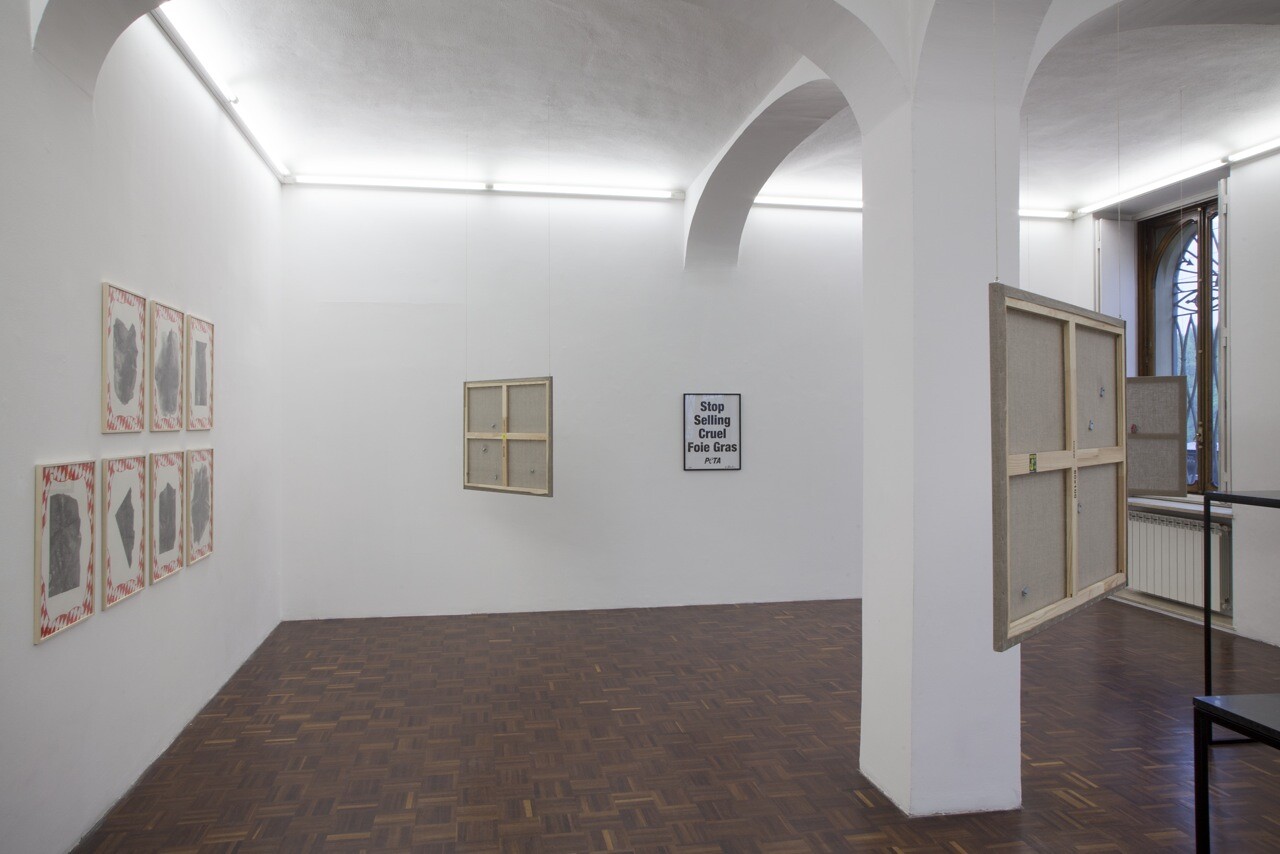
The most striking works in Raphael Danke’s “Stoneflesh Aura” are arrangements of small objects nailed to three unprepared canvases. They catch your eye, then transform two times as you observe them. At first glance, they seem to be shards of pink-red quartz only partially revealed from within the rock that encases them, the kind found in souvenir shops everywhere. As you are drawn nearer by the crystals’ shiny surface, you realize that the rock is in fact a smudged mass of solidified concrete, and the red glow actually comes from bits of glossy paper pasted over it. There’s something funny in the sudden contrast, something of a childish prank—yet before your laugh dies out you realize that what you took to be quartz, then colored paper, is nothing but cut-out pictures of raw red meat, and this is revolting. This mix of sensory fascination, visual irony, and disgust is a signature component in Danke’s work. It most notably characterized his best-known early work, “Entfernungen” [removals], an ongoing series of collages in which Danke reassembled cut-up pictures from fashion magazines in which every trace of human bodies had been removed. The resulting images were both appealing in a fashion spread-like glossy, …
January 26, 2015 – Review
Boris Mikhailov’s “Men’s Talk”
Mike Watson
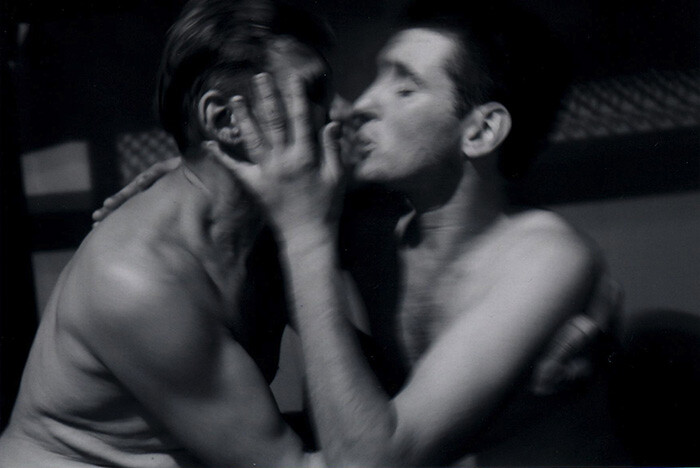
Entering Galleria Guida Costa’s diffusely lit gallery from their front reception room to see “Men’s Talk” feels like entering some kind of illicit and profane chapel. Whilst the space—which occupies an old print workshop a stone’s throw from Turin’s main railway station—bears distinct traces of its past, felt through its concrete floor and yellowing walls, its current exhibition invites contemplation on works of iconographic scale.
The exhibition of Boris Mikhailov (b.1938) is the first in a series on the work of the Ukrainian photographer who came to prominence when he moved to East Germany from the Ukraine shortly after the collapse of Soviet Union. His social realist images portraying drunkenness and destitution both before and after the end of Soviet rule helped make him one of the most important Soviet photographers of his generation. “Men’s Talk” exemplifies the artist’s inquiry into what the he calls “the pure force of human being,” following the lives of a gay couple who were asked by Mikhailov to interact within the “set” of a prison cell in Ukraine over an evening. It’s left radically unclear, though, as to whether the couple are really incarcerated there, or merely inhabiting the space for the images themselves.
The resulting …
November 8, 2013 – Review
Artissima
Stefan Heidenreich
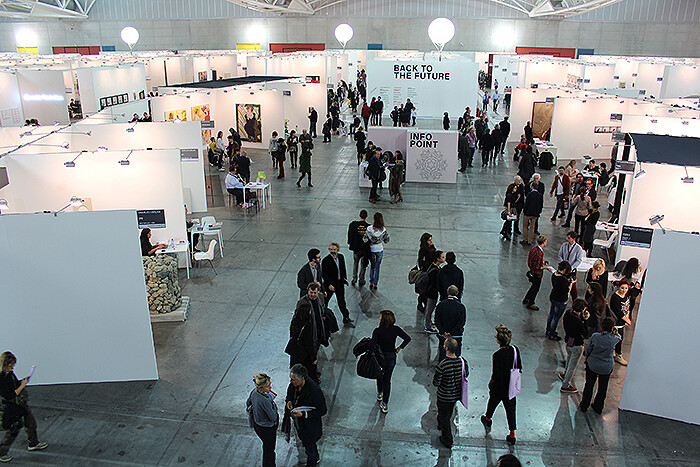
Art fairs rank high among the rather awkward rituals of the contemporary art world. Rarely do stilted power relations come to the fore as clearly as they do on these occasions. Turin’s Artissima numbers among the more engaging events within the minor league—less pressure, local flair, more time for talks, and more attention to art. The plan of the galleries this year includes two parallel sections—“Present Future” (showcasing emerging artists selected by a curatorial board) and “Back to the Future” (devoted to “rediscovery” of practices from the 1960s–1980s)—which are presented alongside the backbone of booths in the main section. This year’s press and collectors’ preview kicked off with a relatively relaxed atmosphere in line with Artissima’s reputation.
Some say that Artissima’s best days are over. During their respective tenures as its artistic director, Andrea Bellini (starting in 2007) and Francesco Manacorda (subsequently in 2010) both made Turin’s fair the most important in Italy and also reinvigorated it as a recognized brand worldwide. This was accomplished not only due to their curatorial knowledge, but also as a result of their genuine intellectual aspirations; both have a reputable publishing history and experience in curating at public institutions, and this expertise was easy to …
November 9, 2012 – Review
Artissima
Filipa Ramos
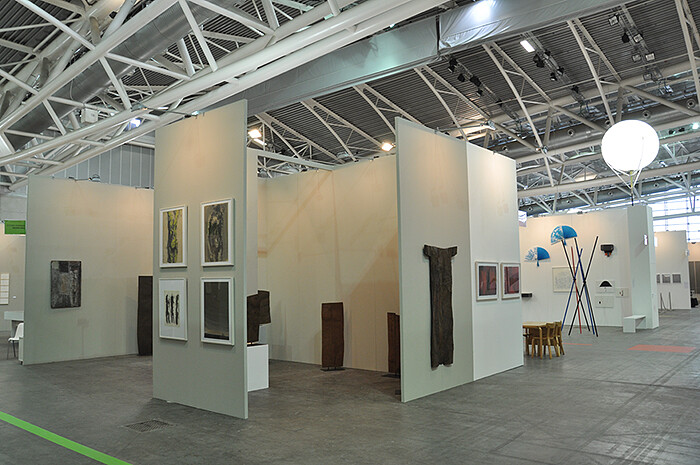
Recalling Gertrude Stein’s “Rose is a rose is a rose is a rose,” we could equally say that an art fair is an art fair is an art fair is an art fair. And the 19th edition of Artissima—a fair with a well-deserved reputation for quality—moved a step away from the program-based identity that has characterized its past. Instead, this year, it appeared as it has always been—that is, as an art fair.
For better or worse, such a return to basics is a radical gesture that characterizes the fair’s new direction. This is because it is always sexier to wrap an essentially commercial institution in a heady cloak of discourse-heavy events and projects that attract and engage all sorts of cultural producers. But these extra-fair activities are presented ipso facto in the midst of the strange vacuum that is an art fair, and most of the time they are received by absent-minded, hurried, tired, and, yes, visually over-stimulated spectators, who have fallen victim to the disorientating consequences of spending too much time in an environment that treats them as consumers. With its artificial lighting and sprawling yet maze-like configuration, an art fair is certainly not the best place to set …
November 9, 2010 – Review
Artissima 17: Lingotto Fiere in Turin
Aoife Rosenmeyer
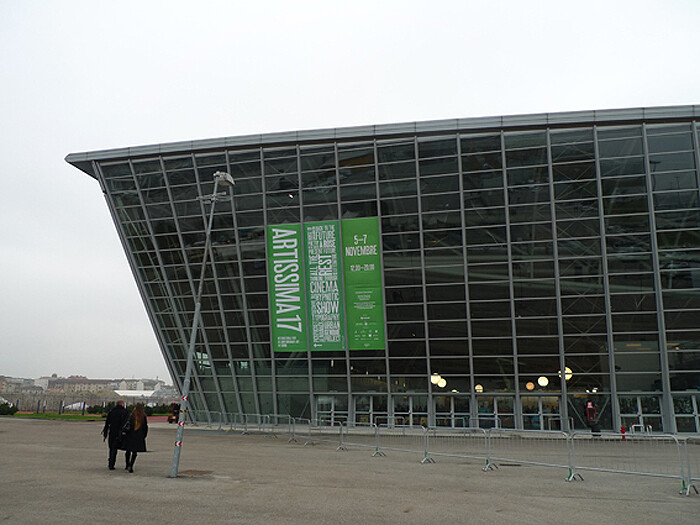
We were a few lonely clouds last Thursday, wandering around Turin’s Lingotto district trying to find Artissima’s new location in the Oval, a recently built exhibition hall tucked out of sight from the main road. Our path took us under the monumental ramp of the former Fiat factory that stands for the region’s proud industrial heritage, a fitting introduction to the city and the hybrid nature of this art fair. While other fairs stage curatorial programmes that feign distance from commercial interests, Artissima is only in part a sales platform, a large part of its remit being the promotion of regional institutions. The salient point is that many of those institutions exist thanks to the largesse of industrial families, whether they found eponymous foundations like the Agnellis or the Re Rebaudengos or they support existing art spaces. Not to mention that the region’s grit and manufacture are in the DNA of the Arte Povera movement, so production and dissemination are constantly intertwined.
Inside the new hall the open space and ribbed roof threatened initially to subsume works; a fine iron sculpture by Alice Cattaneo at Galleria Suzy Shammah struggled for independence from its surroundings. But it was soon business as usual, …